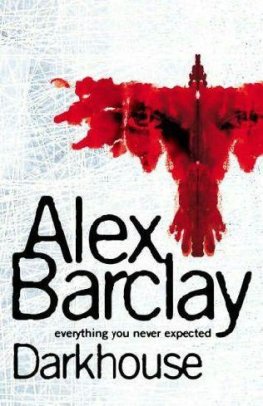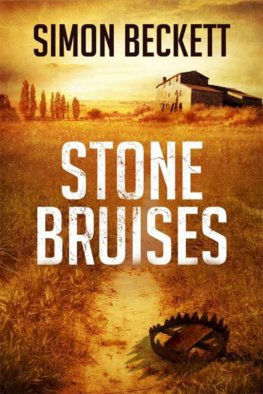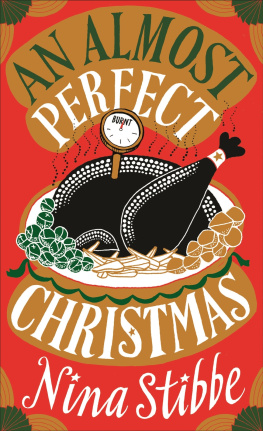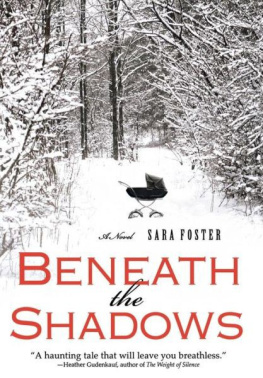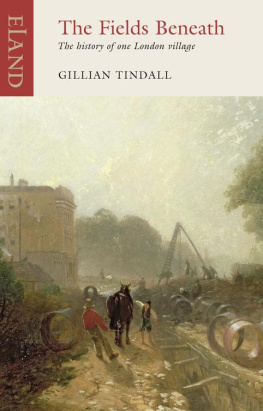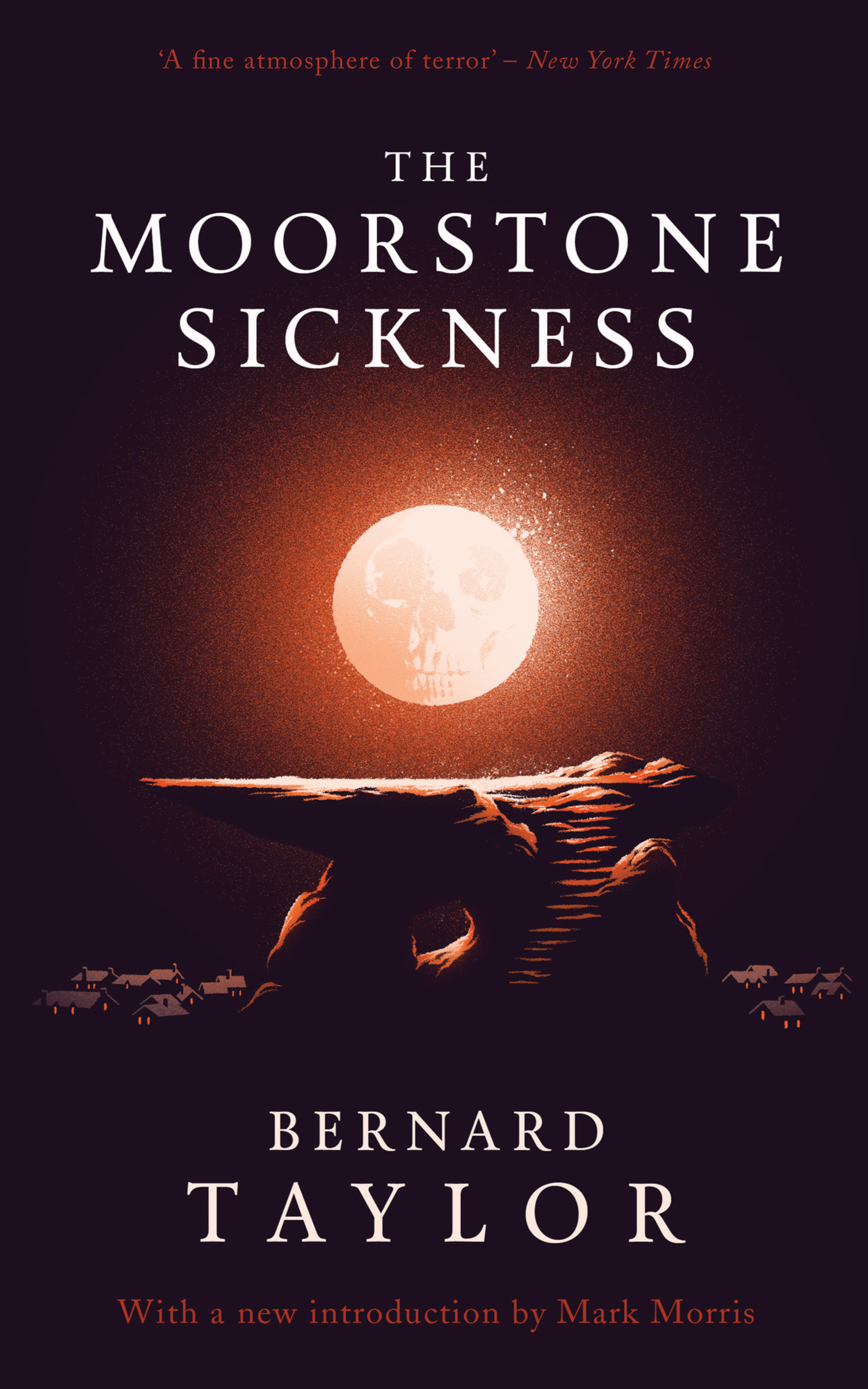THE MOORSTONE SICKNESS
BERNARD TAYLOR
With a new introduction by
MARK MORRIS
VALANCOURT BOOKS
Dedication: This is for Rick Ferreira
The Moorstone Sickness by Bernard Taylor
Originally published in Great Britain by Judy Piatkus in 1982
First Valancourt Books edition 2015
Reprinted from the 1982 St. Martins Press edition
Copyright 1982 by Bernard Taylor
Introduction 2015 by Mark Morris
Published by Valancourt Books, Richmond, Virginia
http://www.valancourtbooks.com
All rights reserved. In accordance with the U.S. Copyright Act of 1976 , the copying, scanning, uploading, and/or electronic sharing of any part of this book without the permission of the publisher constitutes unlawful piracy and theft of the authors intellectual property. If you would like to use material from the book (other than for review purposes), prior written permission must be obtained by contacting the publisher.
Cover by M. S. Corley
Set in Dante MT ./.
INTRODUCTION
Theres just something about 1980 s horror fiction.
Maybe its because it was the decade in which I first began writing seriously, with a view to getting published, that I love it so much. Or maybe its because it combines the traditional sensibilities of horror from an earlier periodoften rural, often occult-based, often steeped in ancient lorewith a new, raw, exhilarating penchant for lurid imagery and shock tactics: the bucolic meets the brash, the ghostly meets the ghastly. Its probably partly (or mostly) my own perception, but at the time the horror I was reading in the s seemed to me less like a natural progression and more like a seismic shift, a leap into a brave new world.
Having said that, it would be nave of me to claim that the only thing that exists between, say, Dennis Wheatleys stodgy black magic potboilers on the one hand and Clive Barkers startlingly graphic tales on the other is a dark, howling chasm. Even if we concentrate solely on British horror fiction, there is plenty of material to bridge the gap. We have the Pan and Fontana books of horror and ghost stories, which combined older, oft-reprinted tales from the likes of Ambrose Bierce and Algernon Blackwood with newer, more lurid offerings from young writers like David Case and Mary Danby. We have a plethora of strange, unsettling stories by Robert Aickman and a young Ramsey Campbell, which appeared in anthologies and collections throughout the s. And, of course, in 1974 we have James Herberts startlingly gruesome The Rats , followed in fairly quick succession by his equally successful follow-ups The Fog and The Survivor .
And then, of course, we have Bernard Taylor.
A former illustrator, teacher and successful actor, Taylor wrote his first horror novel The Godsend in . However it was his second book, Sweetheart, Sweetheart , which first grabbed my attention in the late s. Championed by Charles L. Grant (to whom, incidentally, I made my first professional story sale) in Horror: Best Books, edited by Stephen Jones and Kim Newman (Xanadu Publications Ltd 1988 ), Sweetheart, Sweetheart is an effective, compelling supernatural novel about sexual obsession with a shockingly downbeat ending. Having enjoyed that, and being a sucker for British horror stories featuring paganism and ancient magic connected with standing stones, I then snapped up The Moorstone Sickness in preference to Taylors other books on the basis of Steve Crisps cover painting on the Grafton Books paperback edition, which depicts a gathering of lamp-bearing villagers around a huge, mist-shrouded stone, while a skull-like moon leers in the background.
As with Sweetheart, Sweetheart , the main protagonists of The Moorstone Sickness are a young couple, Hal and Rowan Graham, leaving the hustle and bustle of the big city to take up residence in an idyllic country village, a quiet place where everyone is friendly, everyone knows everyone else, and nothing bad ever happens.
Sinister, right?
Many horror stories of this period take as their premise the unearthing of the worm at the heart of the rosy red apple (Thomas Tryons Harvest Home and Ira Levins The Stepford Wives being a couple of examples that spring immediately to mind), and The Moorstone Sickness is no exception. As readers, of course, we know from the outset that the apple is rotten, but the fun lies not so much in trying to work out exactly what is going on (in The Moorstone Sickness the full horror of what is happening becomes obvious fairly quickly), but in watching the worms gradual and inevitable emergence, and in wondering what, as a result, will happen to the storys protagonists, who for the most part remain blissfully unaware of the oncoming danger.
To maintain the tension it is important that readers care about the fate of the storys potential victims, and Taylor achieves this by making his characters engaging, believable and sympathetic. As a reader I found myself exhorting Hal and Rowan Graham to get out of Moorstone before it was too late, and it was their refusal and/or inability to do so that kept me feverishly turning the pages, right up until the...
Well, that would be telling, wouldnt it?
One other thing I like about Bernard Taylors work, and which I feel I ought to highlight before allowing you to become entwined in Moorstones dark spell, is the way he tells his stories. He has a clear, concise, straightforward writing style, which is both eminently readable and oddly nostalgic. There is an old-fashioned British restraint and elegance about his story telling, which puts me in mind of John Wyndham, another writer whose work I adorein particular his novels The Chrysalids , The Midwich Cuckoos and, of course, Day of the Triffids . But the difference between Taylor and Wyndham is that there is a nastiness (in the best possible sense) to Taylors work, which would never be found in Wyndham. If anything, this is Wyndham by way of the 1980 TV series Hammer House of Horror or Brian Clemens seminal (to me, at least) mid-s series Thriller .
One other thing before I close. I havent yet read all of Bernard Taylors work, but hes such an entertaining and natural storyteller that I fully intend to. Last year I picked up a first edition hardback copy of his 1980 novel The Reaping , and when I next feel the urge to indulge myself in a bit of 1980 s horroras I often doIll pick it up secure in the knowledge that, if nothing else, Ill be in for a damn good time.
Because thats what Bernard Taylor does.
He delivers.
Mark Morris
December 2014
Mark Morris has written over twenty-five novels, among which are Toady , Stitch , The Immaculate , The Secret of Anatomy , Fiddleback , The Deluge and four books in the popular Doctor Who range. His recently published work includes the official movie tie-in novelisation of Darren Aronofskys Noah , a novella entitled It Sustains (Earthling Publications), which was nominated for a 2013 Shirley Jackson Award, and three new novels: Zombie Apocalypse! Horror Hospital (Constable & Robinson), The Black (PS Publishing) and The Wolves of London , book one of the Obsidian Heart trilogy (Titan Books).
Hal glanced briefly at Rowan in the seat beside him to see whether she too was aware of their nearness to the village. She was. Ten minutes ago her eyes had been closed; secured by her seat belt she had slept, knees bent sideways, heavy dark hair falling unchecked across her cheek. Now she was sitting upright, blue eyes bright and looking eagerly ahead. He could guess at her emotions, the thoughts that were going through her mind. Some of her own excitement had communicated itself to him. They would soon be there.... They were starting new lives, the two of them. New. It was all going to be new. And better.



